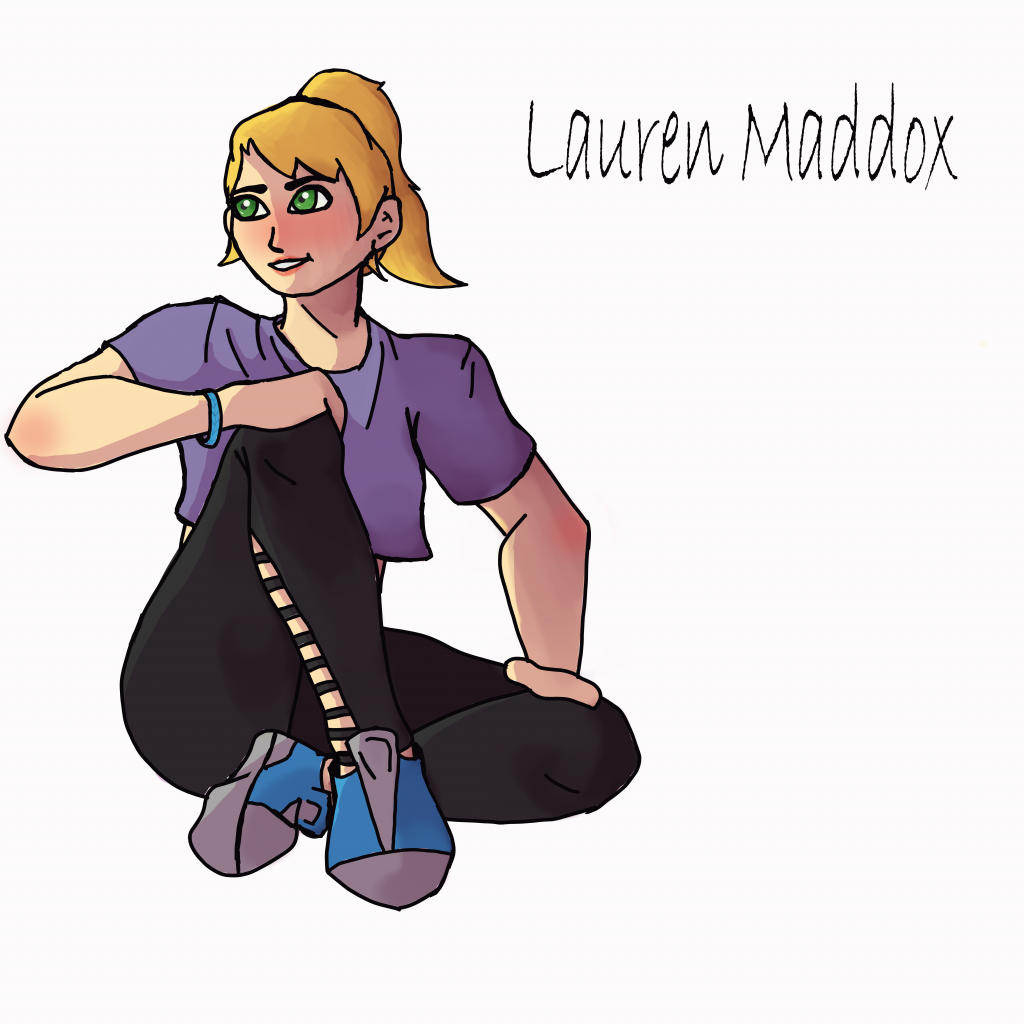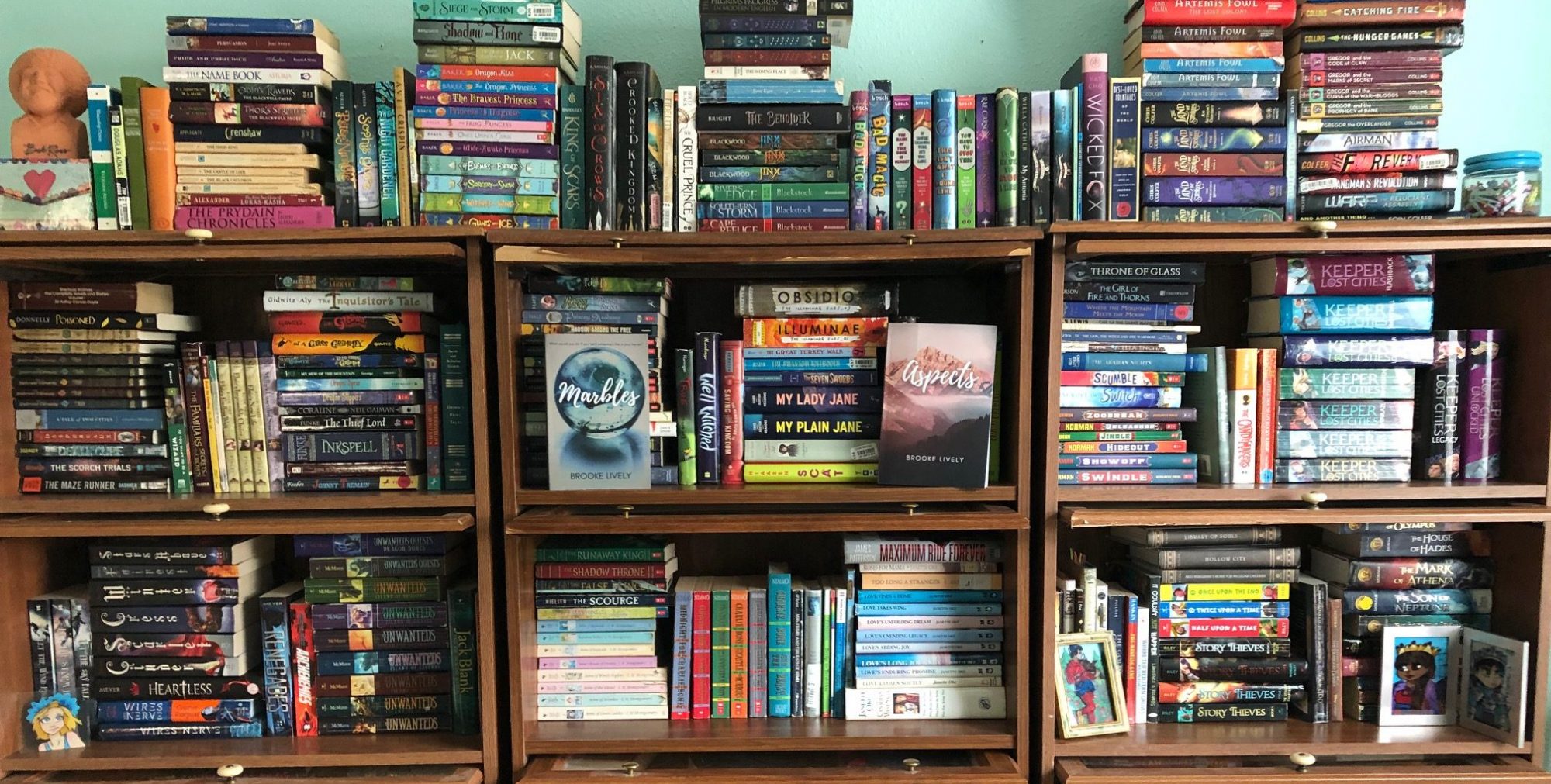Hope
Hope was always meant to be a background character, but I find her life to be one of the most tragic in my writings. Her story is not made for heroics or fame; all her power comes in personal, intimate meetings with individuals. She was born into slavery in the American south in the nineteenth century, and was freed by the Civil War when she was in her early thirties. But the end of the Civil War was not the end to her hardships, and her life, though well-lived, was a difficult one until she met the previous Aspect Hope when she was 51. It took her months of serious consideration to accept the position. The previous Hope was strict: if she became an Aspect, she could not have any contact with her husband or four children. It was only when she realized she could help more as an Aspect than as a mortal, that she accepted the role, claiming the title Hope.
But love is vital to Hope, and she did not allow the Aspect rule to ruin that. When she was told she could no longer have personal relationships with mortals, she began to serve in a multitude of charities, passing through as many lives as she could, helping everyone she met. When she was told that Aspects worked alone, she gathered her closest friends together in a secret safe house where they could remain together as a makeshift family. (Which is, in my head, titled the Illegal Quilting Club.) She never forgot the people she had loved as a mortal, her husband, her children, but she learned to put the memories aside, to focus on what she could do in the present for the people around her. Companionship is her role in life, it is the backbone of her position as Hope. Which is why she was so crushed by Tenacity’s betrayal in Marbles and Aspects. He was her family. Family was her reminder that, though her life had been hard and full of strife, the future was still bright. Family was her reason for hope. When she approached Charity in the beginning of Aspects, she was ready to give that up. Over the course of the story, Charity and the team’s actions did renew her faith in family, but her decision remained. She was tired. She had lived a long life, and she was ready to go. She had had a painful, wonderful life of work and love, and when her end came, she welcomed it with a smile.

Fear & Paxton
I suppose it’s a bit lazy to write about both Fear and Paxton at one time, but I can’t help it: they’re a two-person package. I can’t think of one or the other, only both. They compliment each other’s strengths, improve each other’s faults. They are incredibly different, but at the same time oddly similar. Fear was nine in 1938, when the Nazis invaded Austria, where she lived with her parents and brothers. Her parents were Jewish, and the family lived in a state of terror until Fear was approached when she was eleven to become the next Fear. She accepted the position without hesitation, using her new abilities to smuggle her family to England. They lived there in hiding for almost eight years until they felt it was safe enough to return to Austria. Fear then followed in Aspect tradition and distanced herself from her family, and at 19, an Aspect who had lived through WWII, she found herself alone for the first time. For the most part, she bounced around, traveling, working, and setting aside money until she found herself with quite a collection of both coin and artifacts.
Paxton, on the other hand, grew up in New York City, living with his step-mother and grandmother after his father walked out on the family when he was seven, five years after the death of his biological mother. His step-mother, Leanne, worked and saved tirelessly to send him to college to pursue his love of literature, and he moved to Austria when he was 28 to accept a position as professor in a respected college. Even now, he remains close in contact with Leanne, who is battling cancer and still lives in New York. It was when Fear began donating to the historical department of the University of Vienna that the two of them met. Paxton was 31 and the two of them were immediately smitten with each other. Fear’s experiences in WWII and the pressure she felt at such a young age to protect her family left her suffering with post-traumatic stress disorder. Still, with Paxton’s support, she’s making strides to recover. Paxton’s calm demeanor and steady intellect is a perfect combination with Fear’s eccentric nature and lasting terror. She keeps him living, and he keeps her peaceful.
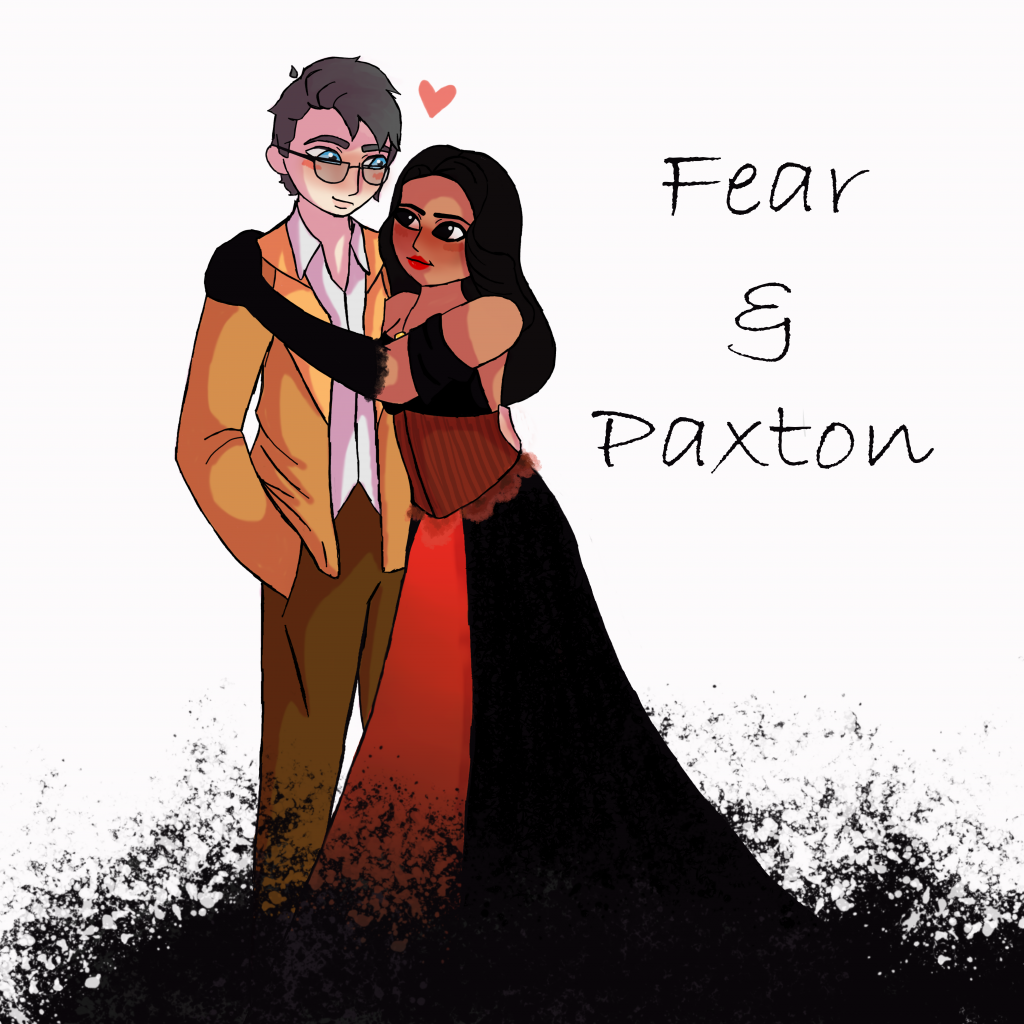
True
True is, in some ways, a lesson in contrasts. Physically, she is punk inspired, with brightly dyed hair and tattoos that you can’t see in the drawing below (Sorry about that). But ever since her creation, she has been in essence a gentle soul. She is protective, and funny, and independently unique, all wrapped up in a layer of unspoken kindness. She loves the mortals she has been tasked with protecting, despite the pain she has seen as a Native American born in 1794. Make no mistake, she is a warrior – she’s fought more battles, known and unknown, than almost any character in the Marbles duology – but every punch she’s ever thrown has been to protect, rather than to harm. Her alias, the normal Trudy Danton, is proof of that: she works as a fast-food waitress, living in a small downtown apartment, and she spends her days immersing herself in the lives of the mortals. She recognizes that it is her duty to protect them, and she does that by learning about them, by watching their day-to-day routines, by loving them through both their messes and their celebrations. What other way to do that than working as a food service employee?
Looking back, I think I would have to say that True is probably the oldest of the characters who appear in Marbles. The first sketch featuring her design was done maybe four years ago, and it had all the characteristics she still has today. Unique clothing style, short hair, tattoos, a sharp-toothed smile and harsh jawline. After that, I did a myriad of sketches with the character as I fleshed out her personality, trying to see where she fit. I still have the drawings: images of her in ballgowns, in uniforms, in space suits. I knew she was important, that she belonged to something historical, but I couldn’t seem to figure out the exact story. When Marbles started to take form, she somehow slipped her way into the story, and it was like she had been there all along. She doesn’t have a huge role in either of the books, but I’ll always love her, I think, as the strange, kind-hearted warrior always shifting between times and tales, fighting for the little guy.
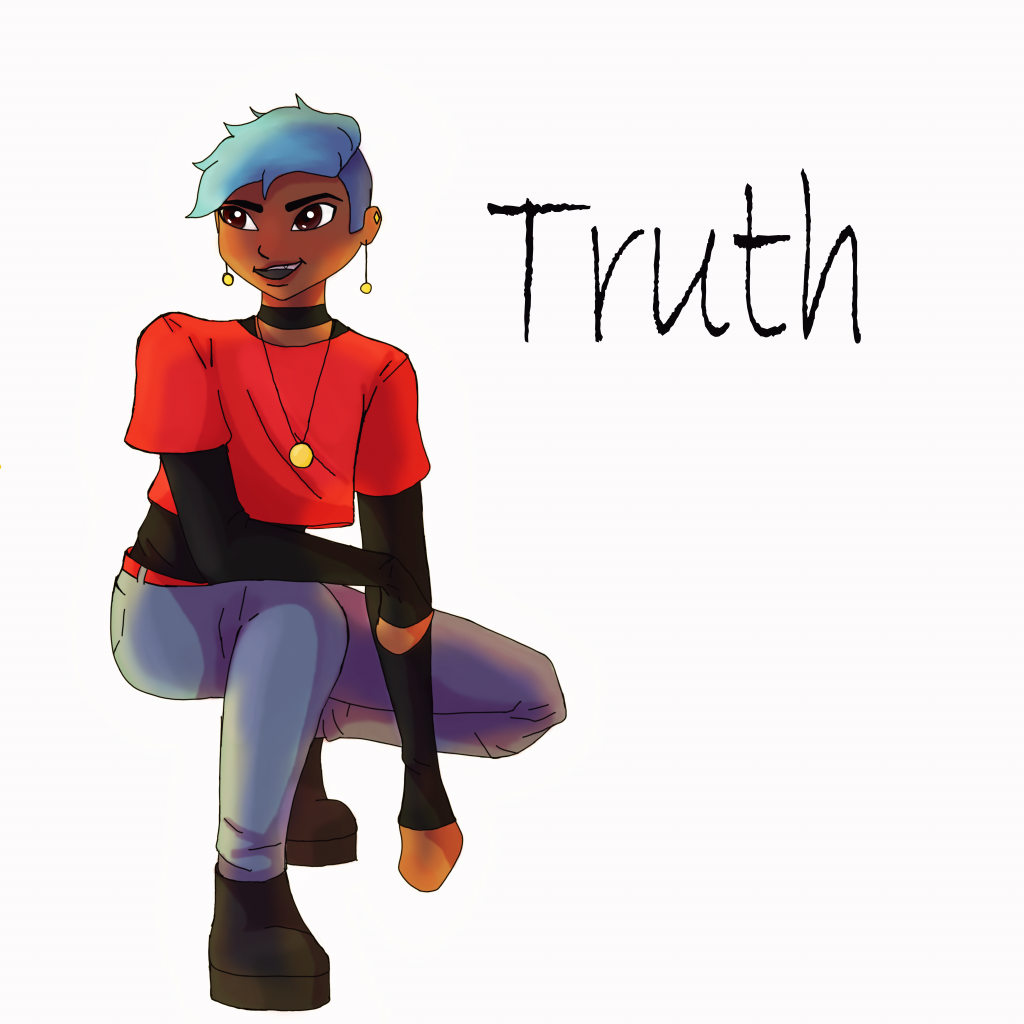
Azzie
Azzie is perhaps the most important character in Marbles, though I doubt he would like to think of himself that way. Azzie was born Benjamin Westfield in 1849, his father a murdered Native American man and his mother a white woman who lived alone in New Mexico territory until her early death. They had little to no money, and throughout his childhood, Azzie remained uneducated and disliked by the small community he belonged to, partially due to his silence. Azzie didn’t speak for the first two decades of his life, and he kept almost entirely to himself after his mother’s death of tuberculosis in 1861, when he was 12. He would have starved to death if it hadn’t been for his cunning, and he clawed a life for himself out of the frontier, teaching himself to survive on his own. In 1868, when he was 19, he was approached by Death, who hoped Azzie would right the wrongs of the Aspects and help the mortals. Within a month, Azzie was the official Aspect Death, given the role with little to no training.
His life as Death was not much easier than it was as a mortal, although there were some advantages. Immortality healed his muteness, as well as giving him the physical size and strength to ensure he would never be hurt again. In an attempt to forget his harsh past, he began to call himself Azrael rather than Benjamin. But his loneliness remained: Though Life and Death were supposed to have a partnership, Life grieved the old Death, and she saw Azzie less as a friend and more as an enemy. But when Eva became Life in 1929, she refused to follow in her mentor’s footsteps. She exploded into his life with the force of a rocket, calling him Azzie rather than Azrael and forcing him to communicate with other Aspects. The two of them could not be more different, but over the years, they’ve formed a strange sort of friendship. Eva is energetic; Azzie is tired, having seen too much of life to be excited by it anymore. Eva is loud; Azzie is soft-spoken and thoughtful, used to silence and thriving in it. He is clever and cunning, but he honestly values and loves the mortals he protects. He didn’t want the role of Death, but he has taken it, and he uses it to ensure that other mortals aren’t left alone as he was.
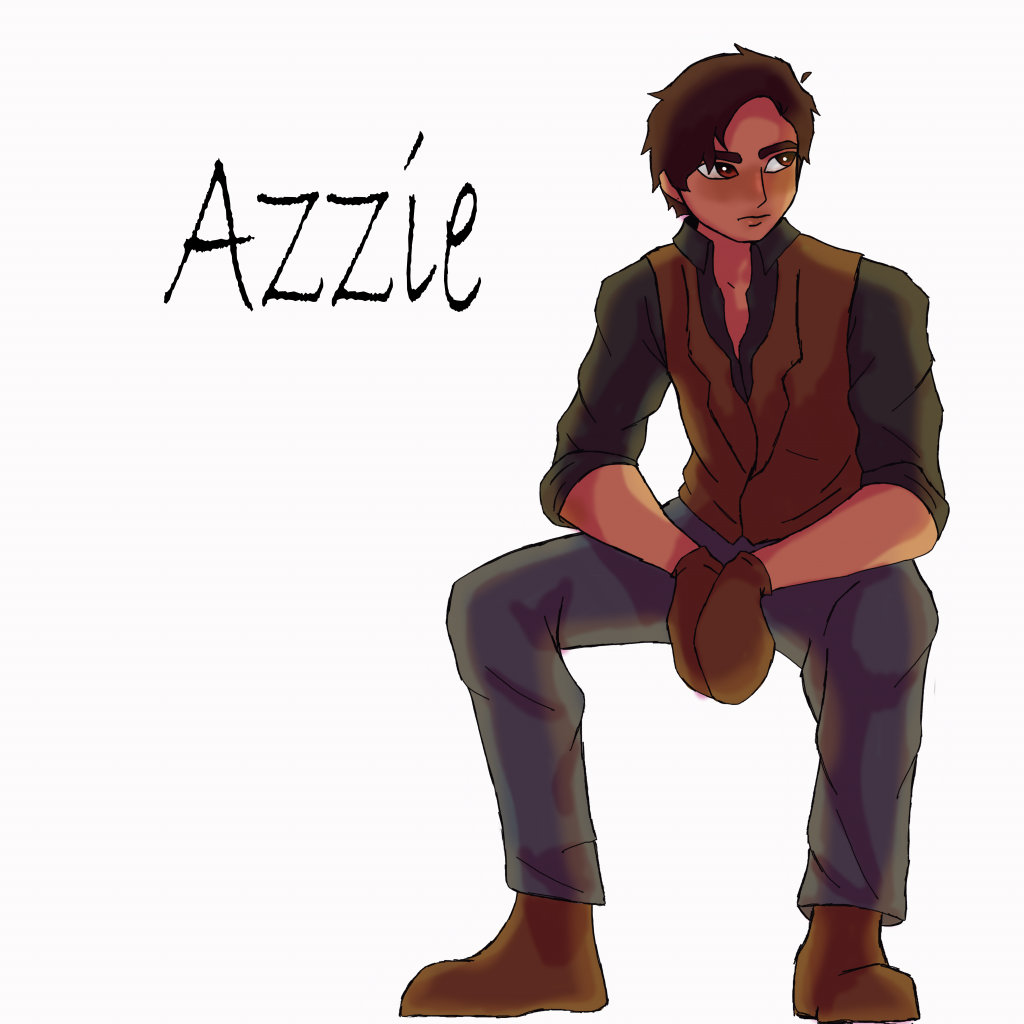
Eva
Now that we’ve finished with the five, let’s move on to two other principle characters in Marbles, starting with Eva. Eva Caner was born in 1904 to a wealthy American family. During her childhood and early teenage years, she saw the rise and fall of the first World War, turning 15 a week before it ended. As America reeled from both the tragedy of war and the bliss of victory, her generation rose up in an attempt to forget the atrocities that had occurred, deafening themselves with dancing and fun. She was one of those young people who cut her hair and shortened her skirt hem, throwing herself wholeheartedly into a world of thrill and chaos. It was 1928 and she was 24 when she was first approached by Life and asked to become his successor. She agreed almost before he finished speaking, and less than a year later she was the official Aspect Life.
When I first wrote Eva, I struggled most with her morality. In every first draft, she seemed uncaring and crude, more concerned with having a good time than ensuring that mortals live long, happy lives. To be honest, Eva is not easily good. She grew up in a time of pain and hardship, and as a young adult she lived in an era of excess and frivolity. She struggles with selfishness and emotions that flare hot and sudden. Her Aspect form references that with her ever-changing color pallet and hair. But she has a truly loving heart beneath her insane energy, an honest desire to help those in need, born as she saw the world struggle under the weight of war. Her relationship with Azzie mellows her somewhat, reminding her to calm down when her emotions get the better of her. She may have difficulty, sometimes, with understanding the seriousness of her position, but she truly wants to help and protect the mortals she has been entrusted with.
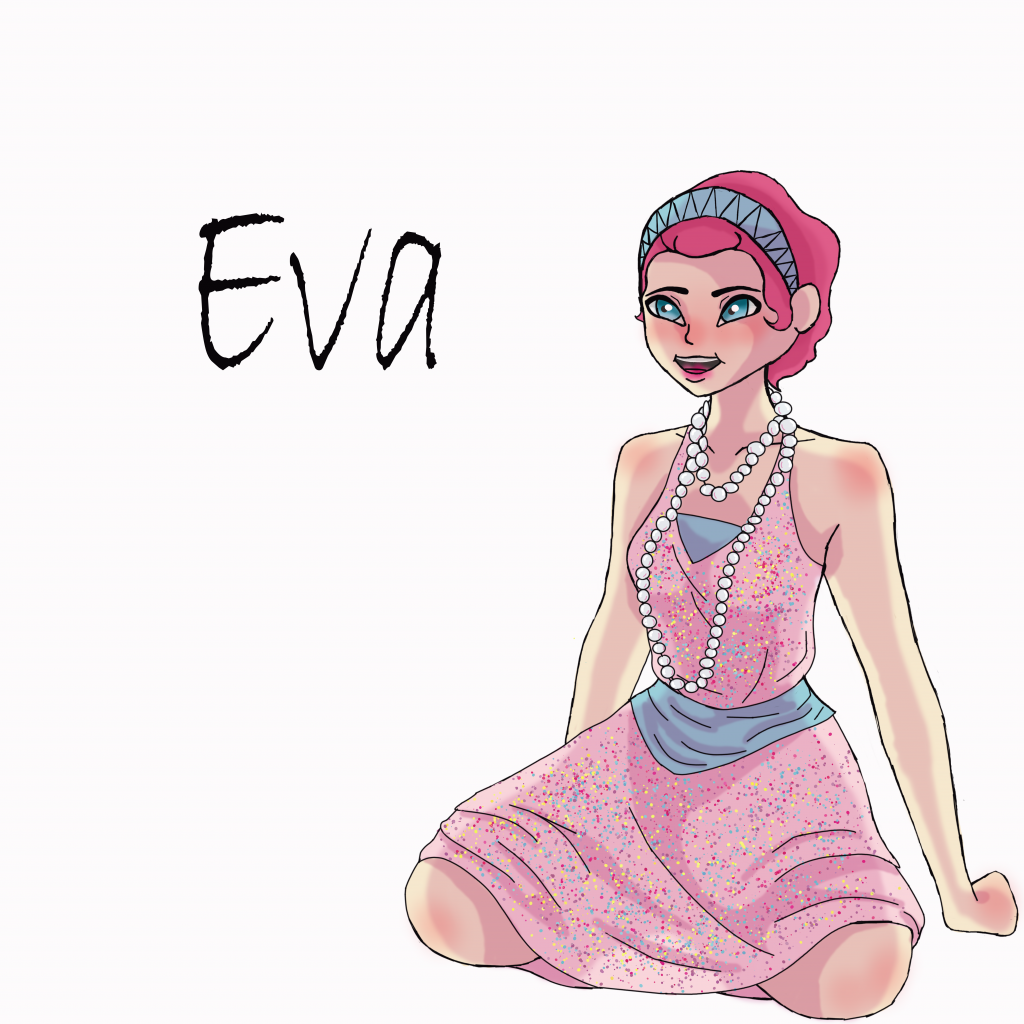
Ophelia
Lauren is not the hero, but she is the main character, and Ophelia acts as a sort of foil for her. She is unique to herself, but in simple terms, I think of Ophelia as a rougher, less polished version of Lauren. Both grew up in negligent households, but in Ophelia’s case she was almost entirely alone, living with her distant divorced mother, her father and brothers absent. Both are self-assured and stubborn, but Ophelia’s confidence is the absolute surety of looking good and knowing it, her stubbornness the determined force of not caring if she’s right or wrong, but not wanting to lose. Both are loyal, but Ophelia’s loyalty manifests itself in sharp words and gentle actions – complaining that Max follows her around too much while simultaneously doing everything she can to make him smile. She is harsh and unrefined, but caring. Rude, but loving.
Ophelia has always been desperate to differentiate herself from those around her, desperate to be noticed and loved. It makes sense, then, that she decorates herself with the ornaments and designs that make her deliciously fun to draw. Dyed and styled red hair (naturally a mousy shade of brown), tattoos she shouldn’t legally have been able to get, piercings in her ears and colorful makeup on her eyes. She is not built like a model, and she had struggled with her weight in the past, but she dresses with proud confidence, favoring bright colors and bare skin. She was not the first to receive a name, but she was the first of the five I felt I truly got to know, which is very in-character for her. I suppose I loved her best in the early days, and even now my mother identifies Ophelia as her favorite of my characters. It’s ironic – the character who, in person, would be the least likable, is on paper the most easily loved. And yes, she is named after the drink.

Max
Max will always hold a very special place in my heart, partly because, in all honesty, I think he is genuinely the best of the five. Max is so totally good, so totally selfless, that I think he’s hard not to love. He has lived his life, due to a lasting illness in his early teenage years that threatened to kill him, with the constant knowledge and acceptance that death is always a possibility. He is never entirely free of this realization – he is never entirely carefree or even happy. In the early days of creating the character, I often used the metaphor of a stream to describe him. Max is a rock on the riverbed. Water and troubles cascade over his back, but he was never moved by them, never shifted from his place. He neither moves to correct the wrongs of the world, nor falters under the stream of struggle. He is steady always, be that good or bad, and his place in the river acts as a stepping-stone for others trying to cross.
Max came in the middle of my creative process, which is so like him. He wasn’t the first to receive a name, nor the last, but I always sort of knew who he was. Out of all the characters, he has probably changed the least since his original inception. He was the best friend, the kind, puppy-dog boy dragged into a world of mayhem that still never seems to stain his perfectly pressed button-down shirt. He is selfless and loyal, steady and solid, all wrapped up in this cocoon of hidden frustration and hope born out of a near-fatal disease that rotted his childhood. It is ironic that the character who (Spoilers) later becomes Life, is so constantly aware of death. He is also the only character with a loving family to act as a support system, as the oldest child in a family of seven. Perhaps it is because of this strong familial bond that Max has hope, an undying, unending sort of hope that leads him to follow his friends into dangerous situations, to stay with Ophelia when she is cruel, to keep a smile on his face even when everything around him crumbles.
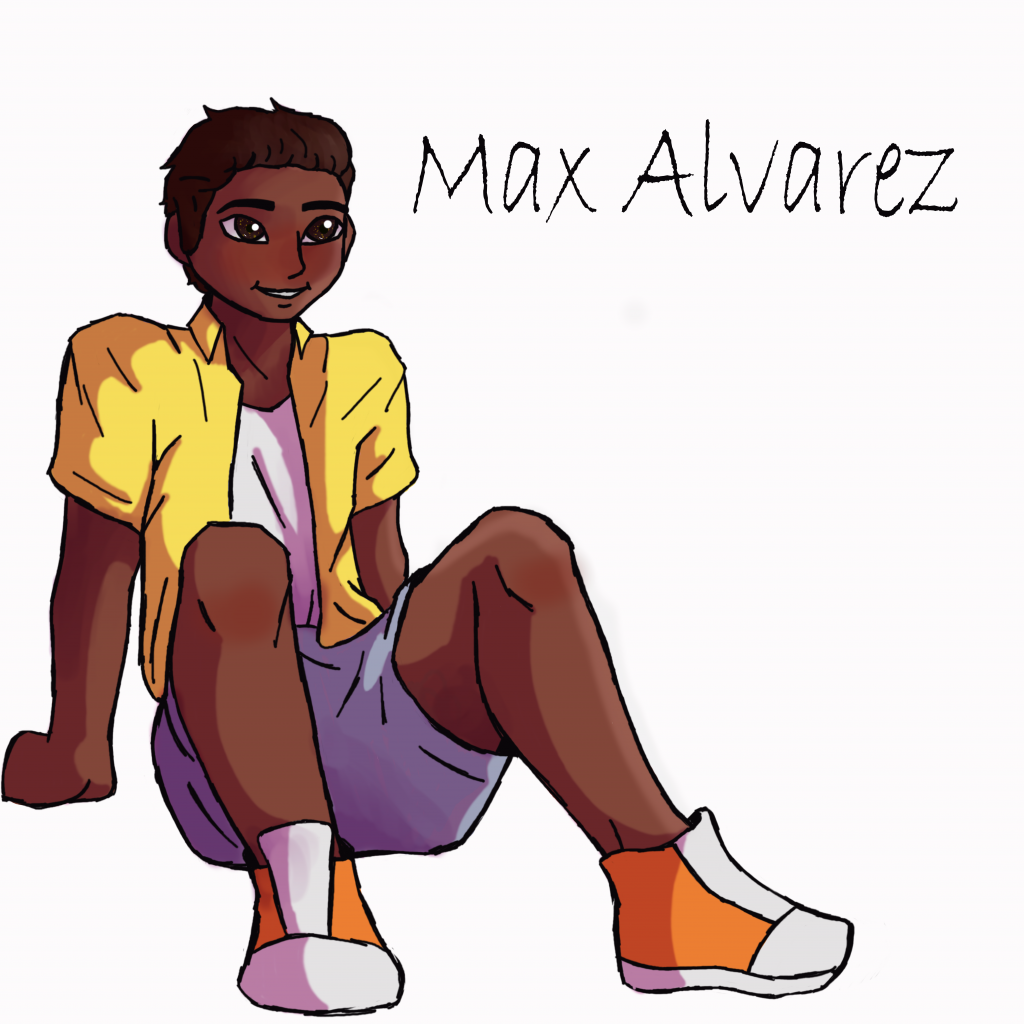
Charity
If Lauren’s internal battle is making her peace with her status as a supporting character, Charity’s is learning to accept that she is the hero. She’s naturally anxious and, at first glance, the farthest thing from leadership material. She’s the youngest member of the team, and has gotten used to being treated like a child, someone who needs to be protected, someone excluded from making decisions. She has lived her life as the only person who can see the Aspects as they truly are, and she has taught herself to ignore them and pretend everything is fine, forcing herself to live in a sort of bewildered constant fear. And yet nevertheless, she is the chosen one. Not her strong big sister or her smart older friend. She’s the one gifted with incredible power. She’s the hero of the story.
Charity is kind. That is what makes her a good leader. She has a genuine empathy for the people around her, a genuine wish to make their lives better. When she first meets the Aspects, she is frightened by their power and apparent cruelty, but she is the first to realize the truth behind their blustering shows of strength. She understands them because she knows what it is like to live afraid and invisible, but she differs from them because she also knows what is means to be truly loved. Almost her entire life has been watching how leaders interact with those they lead: the way her parents neglect and ignore, the way Lauren controls and protects. Even her flaws work to make her a better leader. Her quiet, shy nature makes her watchful and intelligent, and she tends to notice small things others wouldn’t. She is intelligent and calm-natured, her willingness to listen creating an atmosphere of democracy. The only thing standing in her way are her own personal doubts, but when she breaks down her wall of fear, she is all but unstoppable.
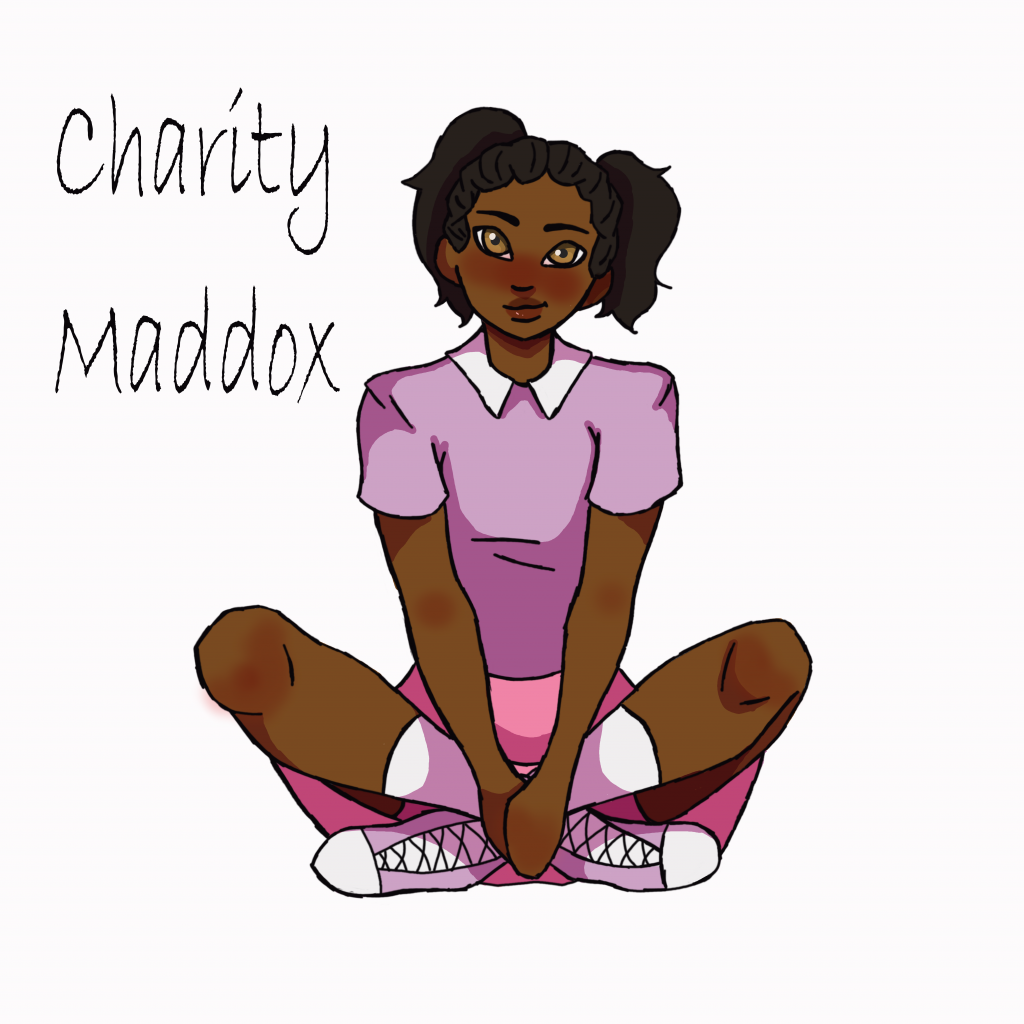
Quinn
Quinn is, oddly enough, both the oldest of the five, and the one to go through the most changes throughout the writing process. His status as the oldest comes from a short story I wrote when I was 12. The plot was simple: A man named Quinn finds himself with a broken-down car during a storm, lost on country roads after dark. He stumbles into a nearby cottage to ask for help and witnesses Life and Death playing a game of marbles for lives. Panicked, he flees, and when he wakes up the next morning, he finds his own marble on his bedside table. If you have read Marbles, you surely see the resemblance. It sounds strange to say I wrote a book out of a short story I wrote when I was 12, but that’s basically what I did. And, to some extent, Quinn from Marbles is the same character as Quinn from the short story, also conveniently named Marbles.
And yet the Quinn I drew the first time I met the team was far different from the Quinn who later spoke in Marbles. That Quinn was gangly and nerdy, a little lonesome and extremely anxious, much closer in personality to the original, short-story Quinn. That Quinn slowly developed into the Quinn in Marbles as I wrote, adjusting throughout rewrites and character studies, until he was fully set into the quick-talking, clever character he is today. Quinn today is a much darker character than he ever was in previous renditions – he grew up in an abusive household, his mother dying when he was young and leaving him trapped with an alcoholic father. He is manipulative and charming, his quick-wit and silver tongue making him almost a direct opposite of Lauren in all her brash honesty. And unlike Lauren, Quinn’s name was chosen with considerable care and thought. The name Quinn is Irish or Gaelic, and means “wise” or “intelligent.” Fitting, isn’t it?
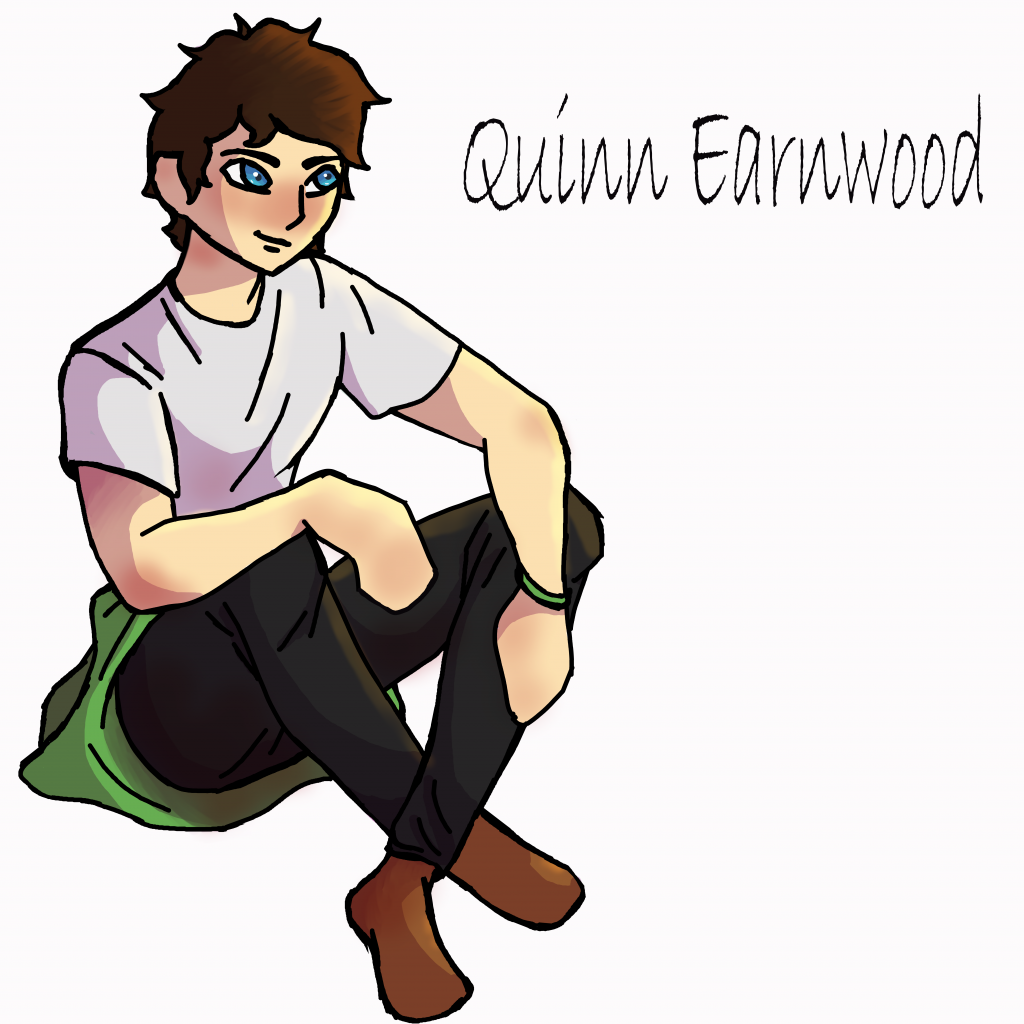
Lauren
Lauren is, and has been since I first created her, my ideal protector. As someone naturally shy and quiet, I wanted to create someone who was the antitheses of everything I was. From her very first appearance, she shone with personality. She was strong, confident, passionate, and most of all, loving. She loved the people around her so much that she spent her life trying to keep them all safe, even if it meant letting go of things she treasured. But she isn’t the hero. She isn’t the Chosen One. She is desperate to be special, but her story will always be that of someone relegated to the sidelines. She can set up the play, but in the end, she won’t be the one to make the final goal. And so much of her story revolves around the idea of telling the story from the perspective of a side character, someone who, in the end, despite their best efforts, will not be the one to save the world. Instead, she supports those who can and allows herself to be overshadowed, all the while struggling to make peace with her role.
I created all five members of my little squad at once. I wanted something to draw, so I found a reference pose for a team of five. At the last minute I decided to draw five totally new characters, people I’d never drawn before. Afterward, I spent months getting to know them, crafting their story, and shaping their personalities. Lauren was one of the first who became fully fleshed out, with pages of drawings and notes and scribbled thoughts, until, finally, I came to her name. As with most of my characters, her name wasn’t chosen for any symbolic meaning. I have found that the more I try to make my character names impactful, the harder it becomes to find the perfect fit. I don’t even remember why I picked Lauren in the first place, and I’m certain it holds little meaning. But still, over two years ago, she became the first of the five to officially be named.
